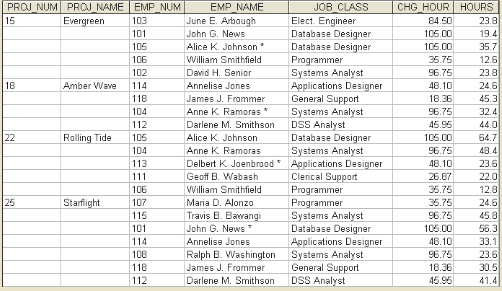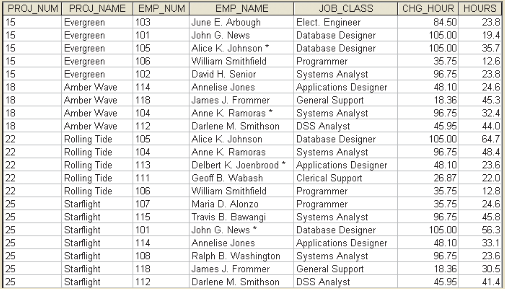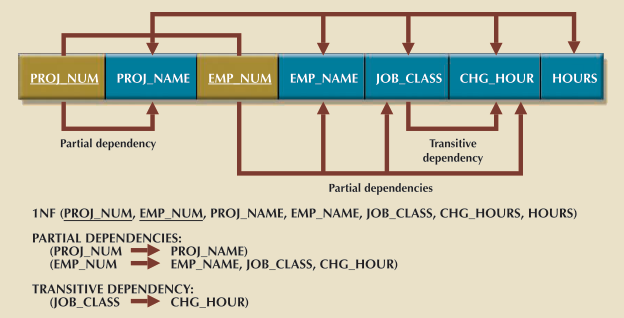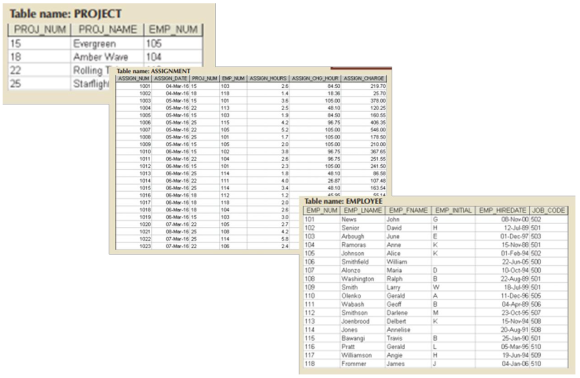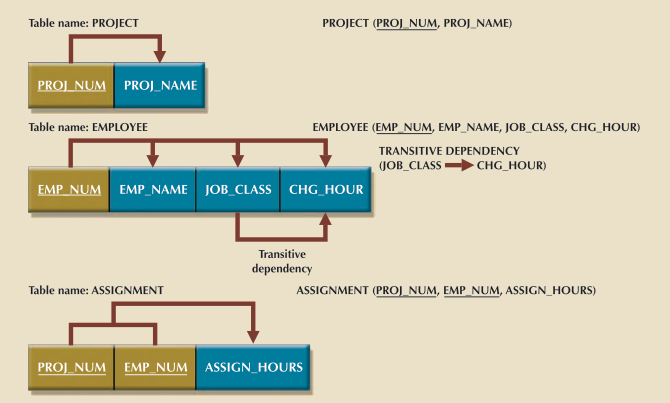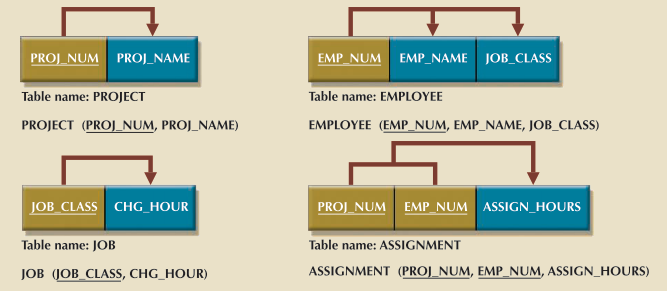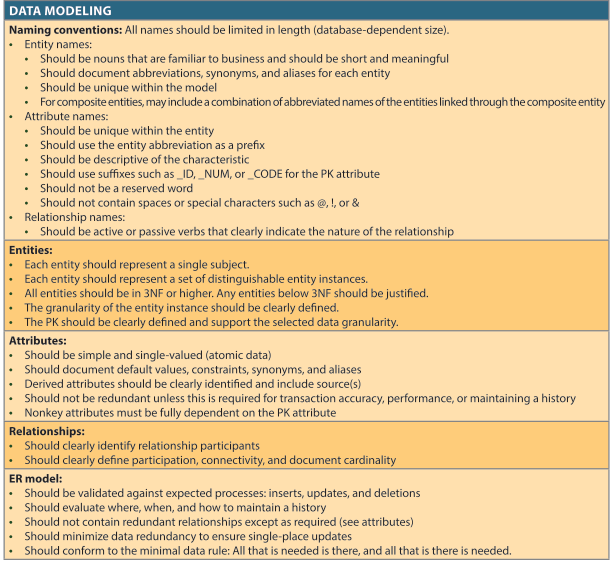Table is the basic building block of database design
Normalization is a process for evaluating and correcting table structures to minimize data redundancies, thereby reducing the likelihood of data anomalies
the process involves assigning attributes to tables based on the concept of determination in Relational Database Modeling
Denormalization is a process by which a table is changed from a higher-level normal form to a lower-level normal form, usually to increase processing speed. Denormalization potentially yields data anomalies - Read more on this

